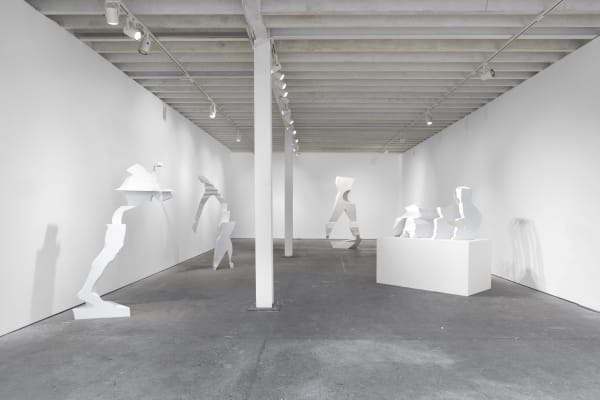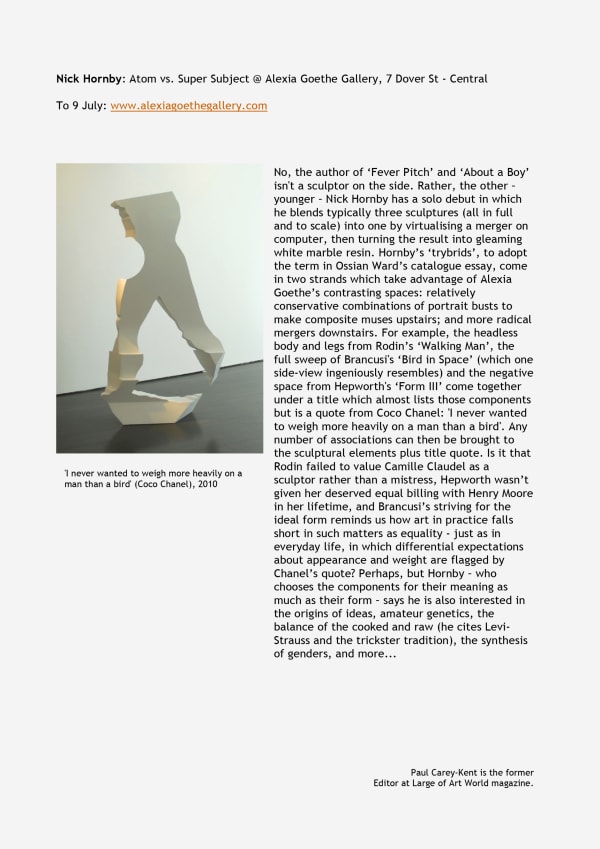Atom vs Super Subject: Alexia Goethe Gallery, London
Alexia Goethe Gallery is pleased to present Atom vs. Super Subject, Nick Hornby’s first solo exhibition in London, featuring a series of new multifaceted sculptural works.
Hornby practices sculpture as inquiry, challenging the icon with its own evocative, metonymic fragment: white abstract sculptures, ranging in size from the small bust to the public monument, from the intimate to the historic.
For each piece, Hornby coerces unwitting sculptures to cohabit a single space: a portrait from the V&A, a Henry Moore figure, Elizabeth Frink’s Riding Man. Virtualised on a computer, Hornby superimposes these three- dimensional forms, then cuts them by machine and finally casts a single object. Each finished sculpture is derived from the physical intersections of such overlapping source material. So, as the viewer circulates the object, recognisable fragments snap into view before dissolving back into abstraction. It is as if the artist gives us a puzzle: we are left to dissect
an amalgam of sources, processes and constructions, piled around an imaginary meeting point.
Where does an idea come from? Is it the sum of many other ideas? Is it always borrowed or stolen? The artist insists on a practice that is as much conceptual as it composed - cast in questions just as much it is made of plaster, jesmonite, resin or fibreglass: Is an artwork always the divisible sum of its parts or can it become so cooked that you lose sight of its origin? Can a hybrid of two things become something new? A synthetic?
After the inquiry, what remains is the object: gleaming white curves, acute angles and high arches. The artist chooses the V&A portrait for
its decorative base, Frink’s Riding Man for its tall legs, and Moore for its smooth enormous lines. The end is formal – that same goal as 100 years previously: finding a point between figure and abstraction, counter-point and balance. The citations are not a critique but an act of camaraderie.


















